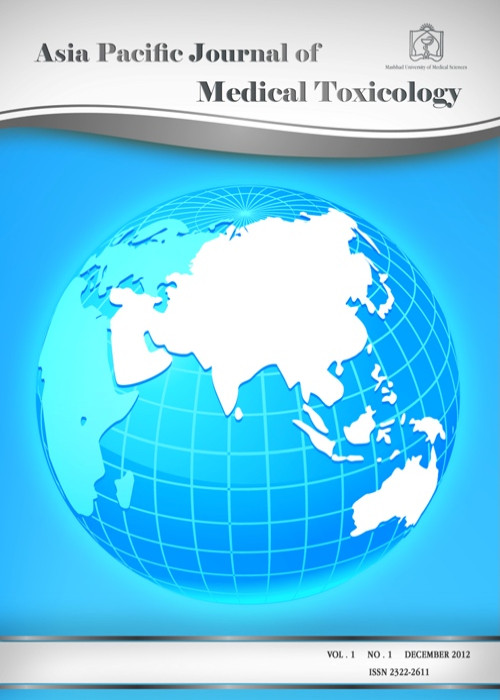Mortality Analysis of Patients with Paraquat Poisoning Treated at Two University Hospitals in Shiraz, Iran
Author(s):
Abstract:
Background
Poisoning with paraquat (PQ) is highly fatal. In this study; demographic and clinical characteristics of a series of patients with acute PQ poisoning treated at two university hospitals in Shiraz, Iran are presented and predictive factors for mortality are analyzed. Methods
This was an analytical cross-sectional study on consecutive PQ poisoned patients admitted to Shoushtari and Ali Asghar hospitals in Shiraz, Iran during 21st March 2012 to 20th March 2013. To find out predictive factors for mortality, independent variables were compared between death and survival using Fisher’s exact test. To determine the factors that had the strongest impact on mortality, logistic regression analysis was done. Results
Fifty-two patients (73.1% men) were included with mean age of 28.2 ± 10.3 years. The most common clinical findings were nausea and vomiting (88.5%), pharyngeal congestion (82.7%), epigastric pain (80.8%), increased creatinine (57.7%), increased liver enzymes (53.8%) and metabolic acidosis (53.8%). The volume of poison ingested was significantly higher in deceased compared to survived patients (P < 0.001). Death was significantly higher in patients with pharyngeal congestion (P = 0.001), respiratory distress (P < 0.001), loss of consciousness (P = 0.025), increased creatinine (P < 0.001), increased liver enzymes (P < 0.001), metabolic acidosis (P < 0.001), increased bilirubin (P < 0.001), respiratory acidosis (P = 0.001), increased INR (P = 0.023), suicidal intention (P < 0.001), and oral exposure (P = 0.047). After putting these factors to logistic regression model, only respiratory distress, increased bilirubin, increased liver enzymes and increased creatinine continued to be significantly associated with mortality. Conlcusion: PQ poisoning is associated with high mortality requiring an immediate assessment of patients and prediction of prognosis. Renal and hepatic failure in addition to respiratory distress can be the strongest risk factors for poor prognosis in acute PQ poisoning.Keywords:
Mortality , Paraquat , Pesticides , Poisoning , Risk Factors
Language:
English
Published:
Asia Pacific Journal of Medical Toxicology, Volume:3 Issue: 4, Autumn 2014
Pages:
141 to 145
https://magiran.com/p1364047
دانلود و مطالعه متن این مقاله با یکی از روشهای زیر امکان پذیر است:
اشتراک شخصی
با عضویت و پرداخت آنلاین حق اشتراک یکساله به مبلغ 1,390,000ريال میتوانید 70 عنوان مطلب دانلود کنید!
اشتراک سازمانی
به کتابخانه دانشگاه یا محل کار خود پیشنهاد کنید تا اشتراک سازمانی این پایگاه را برای دسترسی نامحدود همه کاربران به متن مطالب تهیه نمایند!
توجه!
- حق عضویت دریافتی صرف حمایت از نشریات عضو و نگهداری، تکمیل و توسعه مگیران میشود.
- پرداخت حق اشتراک و دانلود مقالات اجازه بازنشر آن در سایر رسانههای چاپی و دیجیتال را به کاربر نمیدهد.
In order to view content subscription is required
Personal subscription
Subscribe magiran.com for 70 € euros via PayPal and download 70 articles during a year.
Organization subscription
Please contact us to subscribe your university or library for unlimited access!


